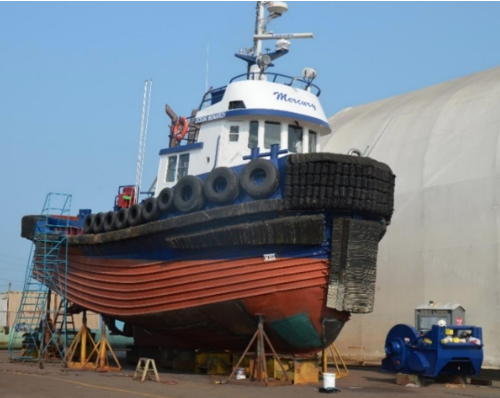A mate who fell asleep on watch was the primary cause of a July 2017 tug grounding in British Columbia, an incident that underscores the industry’s need to better manage crew fatigue, Canadian transportation safety officials reported.
In a report issued Jan. 10 the Transportation Safety Board of Canada said the 47.2’x19.4’x8’, 1,600-hp twin-screw tug Ocean Monarch with three crew members on board made bottom contact while transiting the Princess Royal Channel south of Kitimat, British Columbia, on July 9, 2017, while towing the 190’x46’x15.5’ cement barge Evco No. 15. No pollution or injuries were reported, but the tug's hull, starboard propeller and nozzle were damaged.
After a damage assessment and actions taken to prevent fuel from leaking, the tug resumed its voyage to Kitimat using the port engine. It then returned to the Fraser River and a shipyard in Vancouver for repairs.
The safety board investigation found that the mate, standing watch alone, fell asleep while the tug and barge transited on autopilot through the channel. The mate had been on duty for at least eight hours, and at the time of the grounding the captain and a deckhand where sleeping below deck. Moreover, investigators said all the tug’s navigational alarms were disabled.
“The mate fell asleep likely as a result of acute fatigue from previous night shifts, chronic sleep disruptions, circadian rhythm desynchronization, combined with the low and monotonous workload in the wheelhouse,” investigators wrote.
The latest report reinforces the safety board’s push for better fatigue management in the tug and barge industry, a key finding in its report on the October 2016 grounding and sinking of the tugboat Nathan E. Stewart in British Columbia. In that case, the safety board explicitly criticized the six hours-on, six-off watch system commonly used by mariners, saying it does not allow for sufficient sleep.
In the Ocean Monarch case, the safety board determined that tug operator Mercury Launch & Tug Ltd., Vancouver, British Columbia, “had no strategies in place to mitigate crew fatigue,” despite a June 2011 incident when one of its vessel allided with a railway bridge, an accident that also involved crew fatigue.
The Ocean Monarch operated on a 24/7 schedule, so “a three-member crew made it challenging, and at times impossible, to maintain two people on the bridge every night while also ensuring the crew was sufficiently rested,” the investigators wrote. “If an operator does not have a fatigue management plan and is not required to have one, there is a risk that crews will work while fatigued, increasing the likelihood of an error that leads to an occurrence.”
Both the Transportation Safety Board and the U.S. National Transportation Safety Board say fatigue management is a major issue across all modes of transport. In its report on the Nathan E. Stewart, the Canadian board called for mandatory education and awareness training for watchkeepers whose work and rest periods are regulated, to help them identify and prevent the risks of fatigue. The board also recommended the government require vessel owners to implement comprehensive fatigue-management plans, designed specifically for their individual operations.
As a result of the safety board investigation, Mercury Launch & Tug installed a navigational watch alarm on the bridge of the Ocean Monarch. The company ordered that all alarms be enabled and monitored at all times, and implemented new, safer operating procedures.





